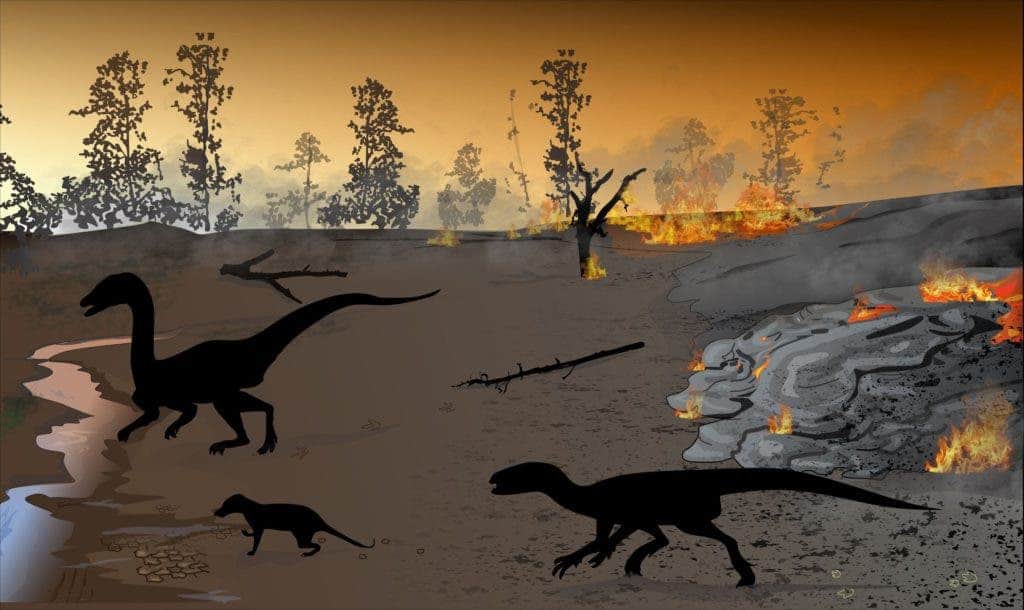Fossil footprints from the Karoo Basin of southern Africa could teach us more about how ecosystems respond to truly massive volcanic eruptions.

Image credits Bordy et al., (2020), PLoS ONE.
The Karoo Basin is covered in extensive basaltic lava flows from the Early Jurassic. It’s believed that the intense volcanic activity recorded during that time had a powerful impact on global climate and local environments, and it largely coincides with a worldwide extinction event.
The floor is lava
“The fossil footprints were discovered within a thick pile of ancient basaltic lava flows that are ~183 million years old,” explains Emese Bordy of the University of Cape Town, lead author of the paper. “The fossil tracks tell a story from our deep past on how continental ecosystems could co-exist with truly giant volcanic events that can only be studied from the geological record, because they do not have modern equivalents, although they can occur in the future of the Earth.”
The basin was turned into a “land of fire” at the onset of the extinction event, the team explains, yet dinosaurs and synapsids still managed to survive in the hellish landscape. Synapsids are a group of animals that include mammals and their closest fossil relatives. Studying their fossils and the fossils of the tracks they left behind might help up understand how ecosystems respond to powerful stresses.
In this study, Bordy and his team described the footprints of these animals, which were fossilized in a sandstone layer deposited between lava flows around 183 million years ago. They reported on five trackways that total 25 footprints among three types of animals — small synapsids, large bipedal and predatory dinosaurs, and smaller, quadrupedal herbivorous dinosaurs. These were some of the very last animals to inhabit the Karoo Basin before it was flooded with lava.
Since the sandstone layer sits in between the deposited lava, it indicates that the animals survived here even after the onset of volcanic activity which transformed the area into a “land of fire”, according to the authors. Further research is needed to find any undiscovered fossils in this area and more accurately date the local geological formations, they add, so we can better track the ecological shifts that took place before and during the extinction.
The paper “Tracking the Pliensbachian-Toarcian Karoo firewalkers: Trackways of quadruped and biped dinosaurs and mammaliaforms” has been published in the journal PLoS ONE.






